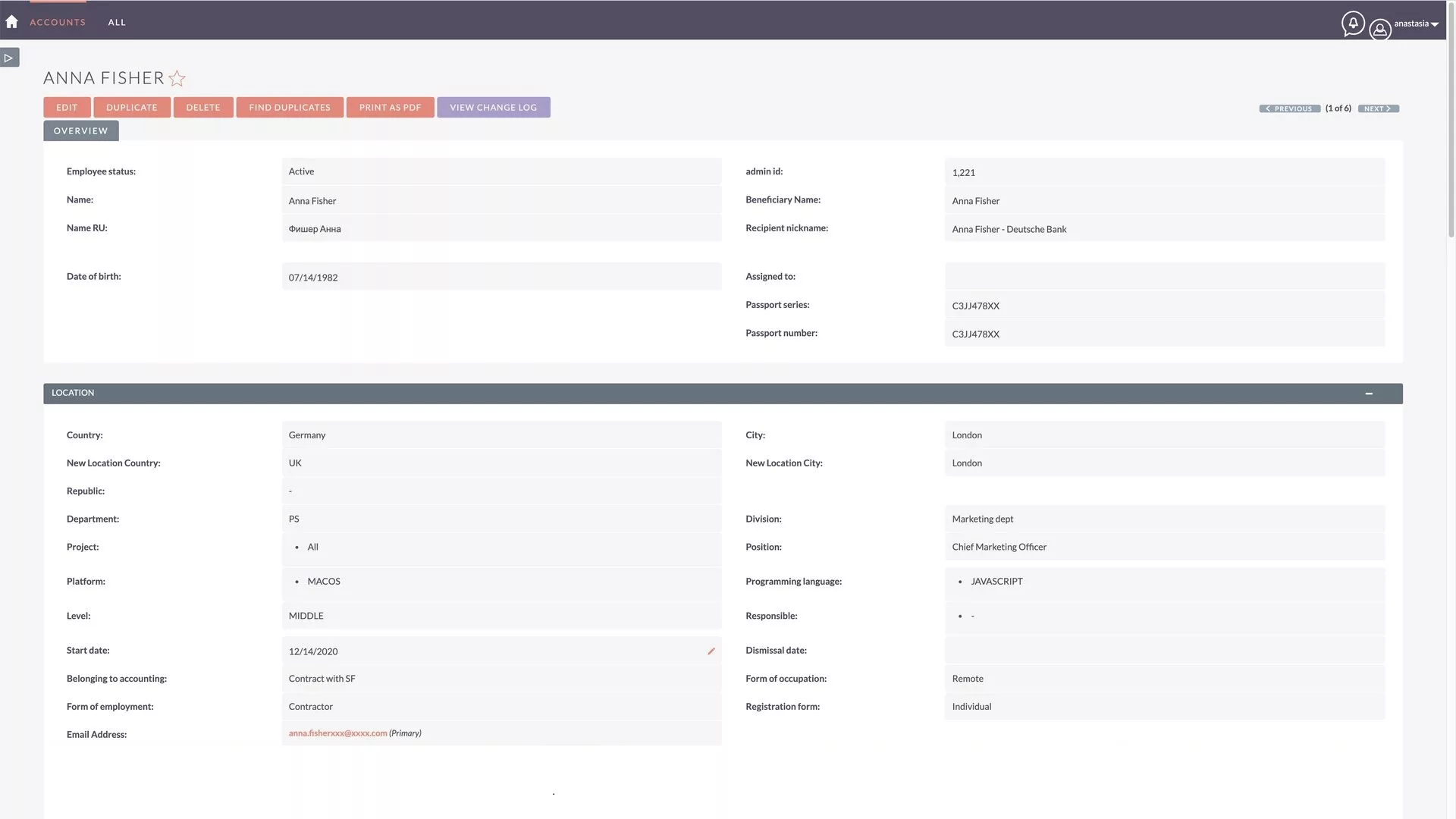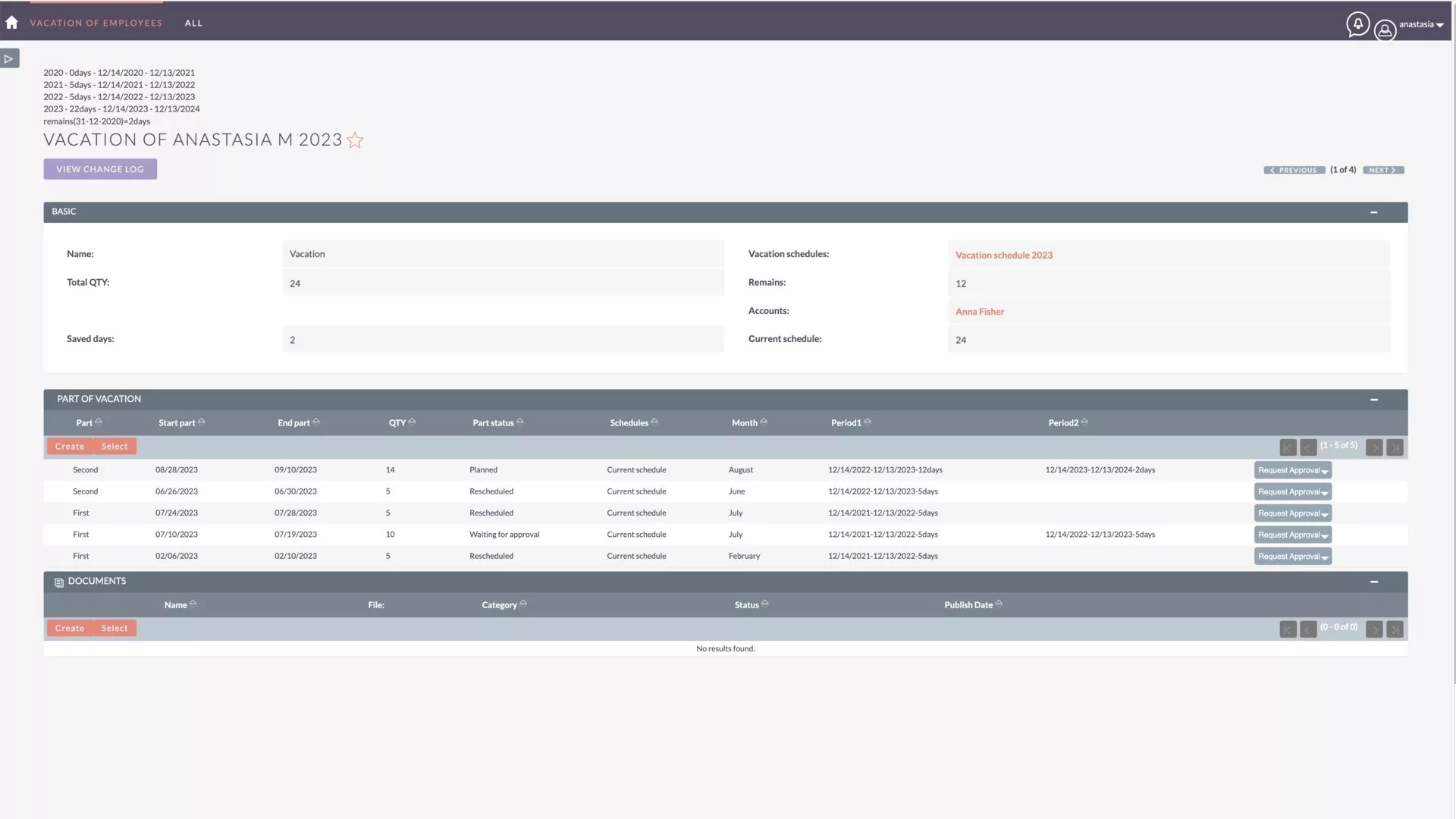Highlights
Industry:
Business process automation
Project scope:
- Modify the existing system
- Add new functional modules for automatic personnel management
- Provide a scalable and upgradable solution
The Client
The client provides software development outsourcing services for various technical projects. They are experts in selecting the right people with the right expertise for a wide range of different tasks, including projects that require rare skills, to help develop, implement, and support B2C, B2B, and B2G products. The projects range in duration from several months to decades.
The client turned to XIM to help update their existing proprietary business management system, adding functionality to automate long-standing manual employee management processes.
The Project
The purpose of the project was to upgrade a live system that automates business processes while ensuring its productivity and continuity with the company’s existing workflows and processes. The new functionality largely concerned the financial side of personnel management and included automatic generation of reports and other documents required for transactions, tracking employee benefits and vacations, and so on. It was paramount to keep existing employee management processes intact as much as possible, enabling a seamless transition from manual and semi-manual procedures to the new system.
Project duration:
42 person–months
Project team:
Several developers and business analysts
Project labor costs:
42 person–months
Technology stack:
PHP, JavaScript, CSS, HTML, Nginx, Apache, MySQL, Linux
1/2
The Solution
The Team
The project involved working with very sensitive information, including financial and personal data, so the client wanted to keep the team to a minimum. Thus, the client and XIM decided to have just two developers and a business analyst working under NDAs, who delved deep into the customer workflows. This somewhat slowed down the pace of development but ensured the highest possible data security.
The Challenges
There were a few challenges faced in the implementation of this project. First of all, the purpose of the system is to automate business processes; however, these processes were developed historically, and it was important to preserve as much as possible the existing workflows and comply with the company’s internal policies. In order to achieve automation, it was necessary to change some of these workflows and polices, and consolidate some of the company’s internal documentation and rules. These changes had to be handled with extreme care.
Secondly, the client altered the end product requirements and operating rules for each workflow multiple times. This meant a flexible and adaptive approach was required, allowing for constant adjustments to each module.
In addition, the original system was based on existing open-source business management functions. This made things easier because it was possible to use ready-made modules and flows, but at the same time created obstacles in terms of customizing some system processes and rules.
The Work
In order to meet the client’s requirements and conditions, it was necessary to almost completely rebuild the architecture of each module and lay down the groundwork for adding more modules should the need arise.
At the beginning, the conventional waterfall model was used, as the original specification appeared clear and unambiguous. Later, as more changes in requirements emerged, XIM switched to the Agile methodology. Through this responsive and adaptive approach, the team achieved all of the project goals.
The Outcome
After automation, most of the client’s workflow remained unchanged, and employees completed tasks in less time. The resulting system automates all the company’s main processes related to financial transactions with employees and automatically generates personalized payment documents from the moment of the employee’s hiring until the conclusion of a contract, be it a regular scheduled payment, vacation, or a business trip.
The client is very satisfied with the project, which has been in operation for almost 4 years already. The system is used daily by 300+ employees of several departments. Further modules are in development, and it’s possible to make continuous adjustments and tweak them according to the client’s changing business requirements.



